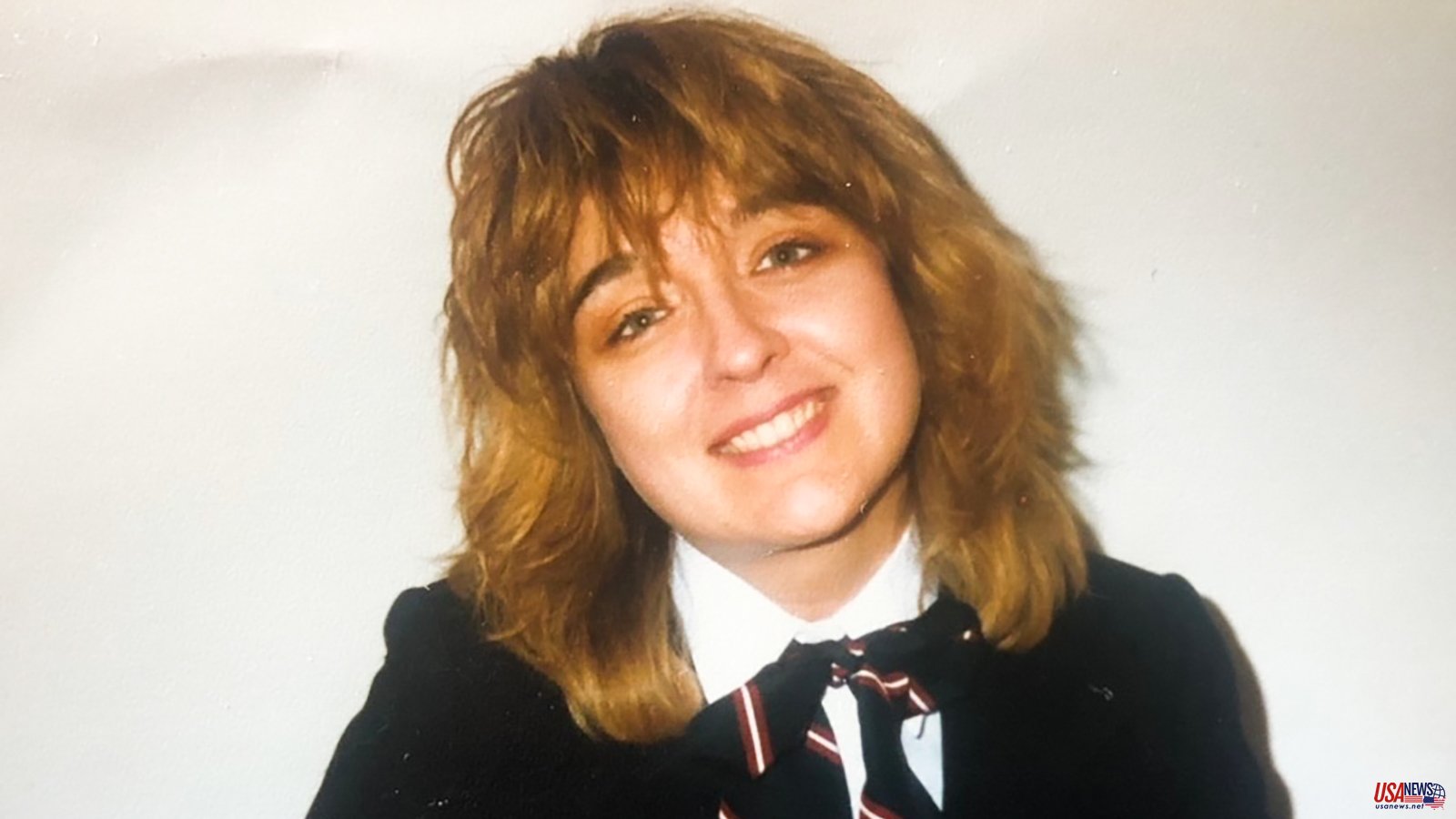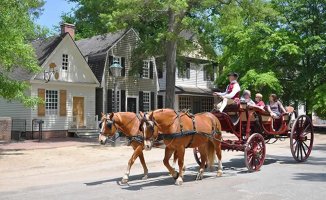Ann Hood, an American novelist, New York Times bestseller and author of "Fly Girl", a memoir about her adventures as a TWA flight attendant at the end the Golden Age of aviation, says, "I came to age when the jet age came to age."
Growing up in Virginia, she saw the first flight of the Boeing 707, which heralded the dawn of passenger jet travel. She also watched the construction of Dulles airport.
After moving back to Rhode Island, where she was 11 years old, her family bought her a 1964 book entitled "How to be an airline stewardess." She was hooked.
"It was sexist and disgusting, but it attracted me because it spoke about having a job that allows you to travel the world, which I thought might work.
Hood began sending out job applications to airlines in 1978 after she had graduated from college. "I believe 1978 was an interesting year because many of the women with whom I went to college had one foot in the past and another in the future. It was a confusing time for young ladies."
"Flight attendant" was a new term. It was gender neutral and was an upgrade to "stewardesses" or "hostesses". The deregulation of the airline industry was just around the corner and was ready for a shakeup.
However, flying was glamorous and sophisticated for most of the time. Flight attendants were still "beautiful, sexy ornaments," Hood said, even though they were fighting for women's rights against discrimination.
The stereotype of stewardesses wearing miniskirts and flirting with male passengers is still a common one, as illustrated by books such as "Coffee. Tea. Or me?" Two airline stewardesses' uninhibited memoirs -- originally published in 1967 but later discovered to be written by Donald Bain (an American Airlines PR executive).
Limits on weight
Although some of the most difficult requirements for flight attendants have been removed, others remain.
Perhaps the most shocking was that women were required to maintain their weight at the time they hired.
Hood says that all airlines included a chart in their application. It showed your height and your maximum weight. If you didn't fit within the criteria, they would not even interview you." Hood says that once you were hired at TWA you could not exceed the maximum weight. You had to maintain your hiring weight. In my case, it was 15 pounds less than my maximum limit.
"This caused my roommate to be fired. It was the only thing that made it worse than what it did for women.
Hood was one 560 of 14,000 applicants who were hired by TWA in 1978 to be a flight attendant. American Airlines acquired TWA in 2001.
Beginning with intensive training in Kansas City, cadet flight attendants learned everything about aircraft parts and emergency medical procedures. They also learned the safety protocols for seven different aircraft. This included the Queen of the Skies, the Boeing 747.
Hood says that it was "terrible" because of its size and the spiral staircase that led to first-class. Hood said that this made it even more terrifying. I would think, "Don't trip. It eventually became a habit.
Chateaubriand carving
According to her, the Lockheed L-1011 TriStar was her favorite plane to fly on. It was only TWA and Eastern Airlines that flew it. It was an easy-to-use, versatile widebody plane. There were two seats each on the sides and four in the middle. This allowed everyone to get out quickly. It was a great plane.
She says that flying was still very glamorous in those days.
"People dressed up as pilots and remembered the food well. It is very different today. It's like being in a fine hotel or on a cruise liner. Hood recalls that Coach was very nice and nothing was plastic." Hood also says she loved the Ralph Lauren-designed uniform she wore and carving chateaubriand for first class passengers. They had the option of Russian caviar or lobster bisque.
It wasn't all roses and sunshine. It was common to smoke onboard, which was also a problem for flight attendants.
Hood states that if you were going on a five day trip, which was not uncommon, you would need to bring a separate uniform. It would make you smell like smoke. "Boy was that I happy when that stopped. Each section was deemed non-smoking in its front rows, but the entire plane was filled with smoke. It was impossible to stop it from moving backwards.
The Mile High Club: Hood says that it was not unusual for international flights to witness a man use the toilet and then have his seatmate join him. It didn't happen every time, but it was there.
"International flights were not as full as they are today, so you can see a couple putting their armrests up and taking a blanket to hide under the seat. It was suspicious, although I cannot say what it was.
It was quite common for passengers to ask flight attendants out or flirt with them. I did have a few affairs with passengers but it was mostly bad. It wasn't what I imagined. In 1982, I met a man on a flight between San Francisco and New York. He was in 47F, and I dated him five years.
An empowering job
Hood has witnessed a lot of strange things aboard. The most bizarre was the first-class woman who seemed to be nursing her cat. Although I cannot confirm that this was happening, it is possible she did have her cat at her breast.
"And then there was the guy who flew all the way in his tighty-whities, his dress shirt, and tie because he didn’t want to wrinkle his pants for an interview. She also mentions the man on the 747 in Frankfurt riding his bike down the aisle.
However, routines can sometimes kick in and not all flights are filled with adventure and glamour.
"I would rate the job as 80% enjoyable and 20% tedious. There was plenty of time to fill in on some flights, especially those with a limited meal. There are limits to how many people you can feed and how many movies you can play. It was fun. Talking to people was my favorite part of the job. It was so relaxing. Hood says that flying is something she still loves today.
It was possible to visit the cities she visited and actually experience them. Sometimes your layover was very short, or you were tired, but the majority of the time, the city was just outside the door. When flying internationally, I took full advantage of this.
In 1986, she quit her job to pursue her writing career. Things had changed by then. The federal government had been removed from all aspects of flying, including fares and routes.
The number of seats in planes increased and the experience was no longer as pleasurable. However, flying became more accessible and democratized for a greater percentage of society.
Hood said that she is proud of her work in the sky.
"Flight attendants make a great force. They are highly unionized. They're independent. They make all decisions in the cabin. They also have to troubleshoot. They are there to help with emergency situations. They arrive in cities they don't know and then find their way.
It's an extremely empowering job, but it's also a sexist one. It is contradictory in itself today, as it was when I started it," she said.
She recommends it as an option for a career.
She adds that she was 21 when she was hired and it gave her confidence, poise, and the ability "to think on my feet." To be able to take control of the plane and to walk into a city feeling completely at home. Or at least to figure out how to feel at ease in it.
"I don’t know if this should be someone’s main job, but if they desire it to be, that’s great. However, I believe that a few years as a flight attendant can make a big difference in your life.













